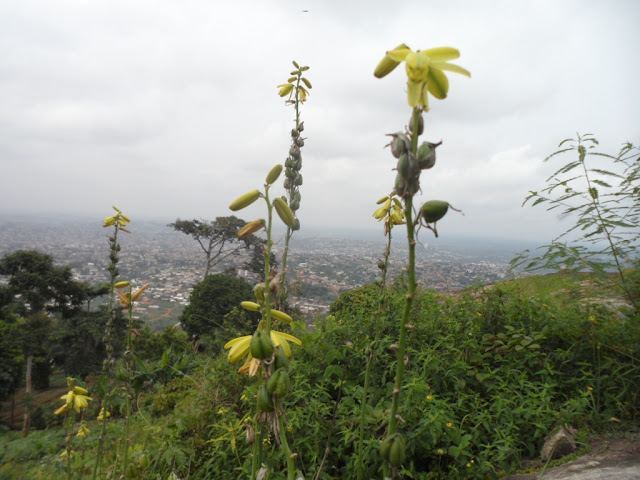Albuca zenkeri Engl. (Asparagaceae) was described
by Engler in 1902 from the unique
harvest carried out in Cameroon by G.
Zenker in 1897.Besides this event, no other harvest is known. During the
visit of an inselberg located in the immediate suburb of Yaounde, capital of
Cameroon, this species was found. An article which takes stock of this
rediscovery permits amongst other things a more detailed description of this
species on press. In preparation, this article equally brings out the threats
that weigh on Albuca zenkeri Engl.
and suggests this taxon be placed under critically in danger of extinction. (Mars 2011; Mbamba 2012).
 |
Blooming of Albuca zenkeri on an inselberg at 1000m of altitude
above the town forests of Yaounde
|
The only population found for this race of lithophytes
are distributed in small dispersed colonies within a radius of 7m to 8m at the
summit of a slope of domes of typically inselberg rocks. These fragile colonies,
maintained on a very steep side are improbably threatened today by maize fields
at about 10m and the scours of fires from farmers.
Taxonomy of Albuca zenkeri.
The genus Albuca
refers to a group of Angiosperms or plants with monocotyledonous flowers
belonging to the family of Asparagaceae (theplantlist.org 2012). Asparagaceae is
a family of plants whose classification has highly advanced within the last
decades (APG II 2003, APG III 2009).
This classification does not exist in Cronquist’s (1981) classical
classification who compares these plants to that of Liliaceae. The classification has therefore
separated this family, Liliaceae and linked to the order of Asparagales
Aucun commentaire:
Enregistrer un commentaire
Dites ce que vous pensez ici